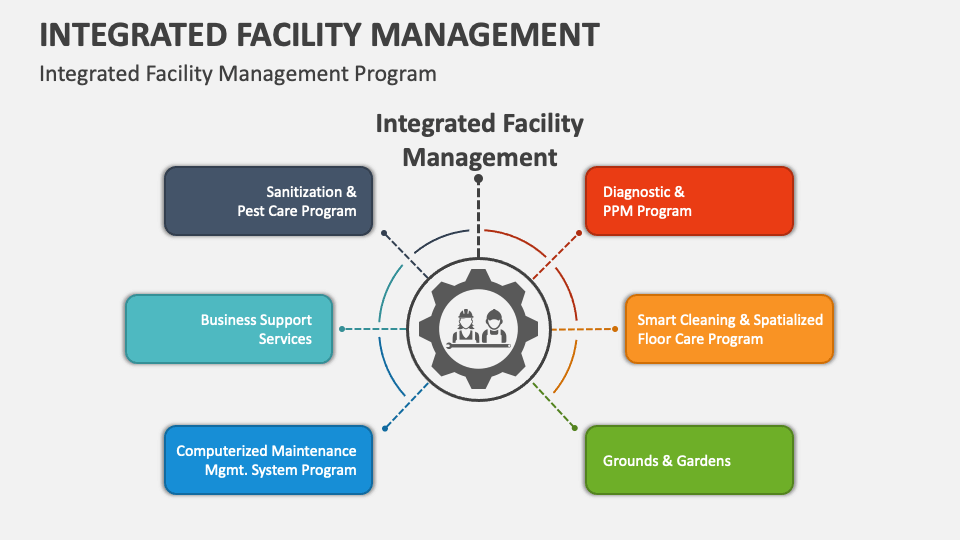Discovering the Conveniences of Facility Management in Today's Company Landscape
Discovering the Conveniences of Facility Management in Today's Company Landscape
Blog Article
The Essential Guide to Center Administration: Methods for Success
Center monitoring plays a crucial duty in the overall success of an organization, offering as the backbone that supports security, performance, and efficiency. The nuances of efficient center monitoring expand past mere logistics and require a detailed understanding of both qualitative and measurable metrics.
Understanding Center Monitoring
What comprises effective facility administration? Efficient facility administration incorporates the control of numerous business features to ensure that constructed environments are safe, efficient, and for productivity. Facility Management. It integrates the principles of engineering, business, and style management to create a seamless operational circulation within a company
Crucial element of facility management consist of space preparation, upkeep administration, and compliance with health and security guidelines. Area planning focuses on maximizing using physical resources to sustain organizational objectives, while upkeep administration ensures that centers are kept in optimal problem, maximizing life-span and minimizing functional expenses. Compliance with regulative and legal criteria is vital, as it safeguards the organization versus prospective liabilities and boosts its track record.
Additionally, efficient center administration relies upon the calculated use modern technology, such as Building Administration Equipment (BMS) and Computer-Aided Center Management (CAFM) devices. These technologies promote real-time tracking of building systems and streamline upkeep procedures. Eventually, an extensive technique to facility monitoring not only advertises operational effectiveness yet also fosters a favorable environment for workers and site visitors alike, driving general organizational success.
Key Methods for Optimization
Enhancing facility management calls for a strategic technique that aligns operational methods with organizational goals. To attain this, the first crucial approach is the implementation of incorporated technological remedies. Utilizing sophisticated software program systems allows for real-time surveillance of center operations, assisting in data-driven decision-making and boosting overall effectiveness.
Second of all, normal assessments of facility efficiency are necessary. Conducting regular inspections and audits makes it possible for center supervisors to identify areas that need enhancement, making sure that sources are allocated efficiently. This positive technique aids in reducing downtime and boosting solution distribution.
An additional essential strategy is fostering collaboration across departments. By motivating open communication between teams, facility managers can better align their techniques with company goals, resulting in enhanced operational synergy. Additionally, engaging staff in training programs advertises a society of liability and boosts their capacity to add to optimization initiatives.
Enhancing Security Procedures
Strengthening safety protocols is important for creating a safe and secure setting within centers. A detailed safety procedure not only safeguards employees and site visitors but also boosts functional performance. To achieve this, center supervisors should conduct normal danger analyses to make certain and determine potential risks that suitable measures remain in place.
Educating and education are important components of effective safety and security procedures - Facility Management. Staff members must here receive ongoing training in emergency situation treatments, devices handling, and individual protective measures. Routine drills, such as fire evacuations or lockdown treatments, foster familiarity and preparedness among personnel
Additionally, clear communication networks should be developed to report security problems quickly. This consists of creating an obtainable platform for staff members to voice possible hazards or events without fear of . Leveraging technology can improve safety and security measures; for instance, implementing monitoring systems and accessibility controls helps keep track of center tasks website and limit unauthorized entrance.
Finally, conformity with neighborhood regulations and market criteria is non-negotiable. Regular audits and evaluations of security methods make certain alignment with existing laws and finest methods. By focusing on these approaches, center managers can grow a society of safety that protects all stakeholders and ultimately adds to the organization's success.
Improving Office Environment

Ergonomic factors to consider are vital to reduce physical strain and discomfort. Facility Management. This involves providing adjustable furniture, correct lights, and appropriate area for motion. These modifications can result in decreased absence and increased job satisfaction
Visual appeals play a vital role fit the workplace atmosphere. Making use of shade psychology, all-natural illumination, and greenery can cultivate a stimulating and welcoming setting. Attentively developed spaces can enhance creative thinking and boost total health.
Additionally, motivating employee involvement via inclusive decision-making processes can boost the sense of ownership and belonging. Gathering comments on workplace renovations and including employees in the layout process can lead to a much more tailored setting that satisfies their needs.
Finally, promoting health efforts, such as wellness programs and leisure rooms, can additionally add to an encouraging work environment society. By focusing on these methods, facility supervisors can efficiently boost the workplace setting, driving both worker fulfillment and organizational success.
Determining Success in Facilities
Measuring success in facility monitoring needs a thorough approach that examines both quantitative and qualitative metrics. Quantitative metrics normally include click here crucial efficiency indications (KPIs) such as area application rates, power intake, maintenance expenses, and tenancy levels. These metrics offer a clear photo of functional performance and financial performance, permitting center supervisors to recognize areas for enhancement and standard versus industry standards.
Qualitative metrics, on the other hand, concentrate on customer satisfaction and worker involvement. Studies and feedback devices can evaluate exactly how well the centers fulfill the demands of occupants, assisting to examine the overall workplace atmosphere. This facet is crucial, as a satisfied workforce is commonly linked to boosted performance and retention prices.
To effectively measure success, facility managers ought to likewise take into consideration incorporating technology, such as building management systems and data analytics tools, to collect and analyze relevant data. Frequently examining both collections of metrics enables a much more balanced sight of efficiency and educates critical choices. Inevitably, an effective facility administration approach pivots on a dedication to continual enhancement, making sure that both functional effectiveness and user fulfillment are focused on.
Final Thought

Center management plays a crucial function in the total success of an organization, offering as the foundation that supports efficiency, safety, and effectiveness.Key aspects of center monitoring include space planning, upkeep monitoring, and conformity with health and security guidelines.In addition, effective facility administration counts on the critical usage of technology, such as Building Management Solution (BMS) and Computer-Aided Facility Administration (CAFM) tools. Eventually, a comprehensive technique to center administration not just advertises functional performance however additionally cultivates a favorable setting for staff members and site visitors alike, driving total organizational success.
Inevitably, an effective facility administration technique hinges on a commitment to continuous renovation, ensuring that both operational effectiveness and user complete satisfaction are prioritized.
Report this page